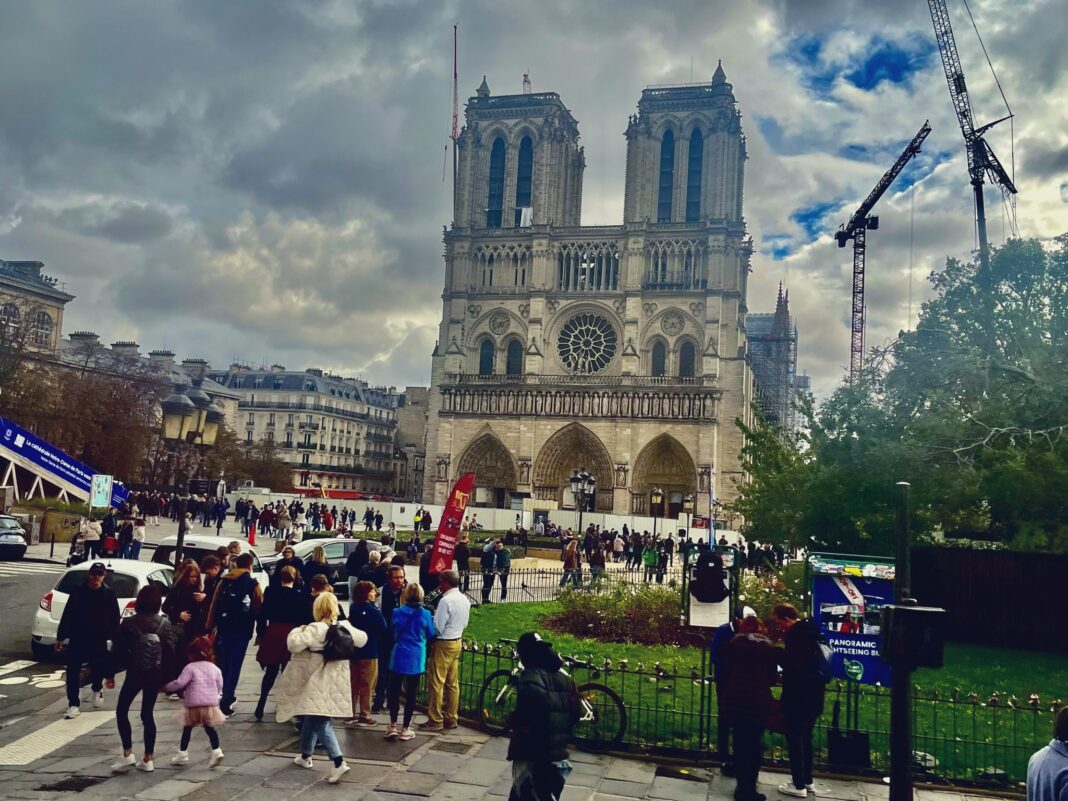“We did it”: On Friday, November 29, Emmanuel Macron was so moved by the success of his gamble that he couldn’t wait any longer. A week before the grand ceremony scheduled for December 7 to mark the reopening of Notre-Dame Cathedral, to which some 100 heads of state will be invited, the French president savored, almost on his own, the results of the huge work undertaken by craftsmen, artisans, carpenters, master glassmakers, rope makers and other experts in historic monuments to restore the architectural jewel, destroyed by fire five years earlier.
“How beautiful it is,” he marveled from the cathedral’s forecourt, gazing upward as if to thank God, while the cameras filmed the interior of Notre-Dame’s nave. Bareheaded, without a helmet, he strolled, spellbound, past the altar, under the roof structure, through the chapels, admiring the building’s cleaned marble and restored gilding. Praising each and every one of the trades, he celebrated the feat accomplished.
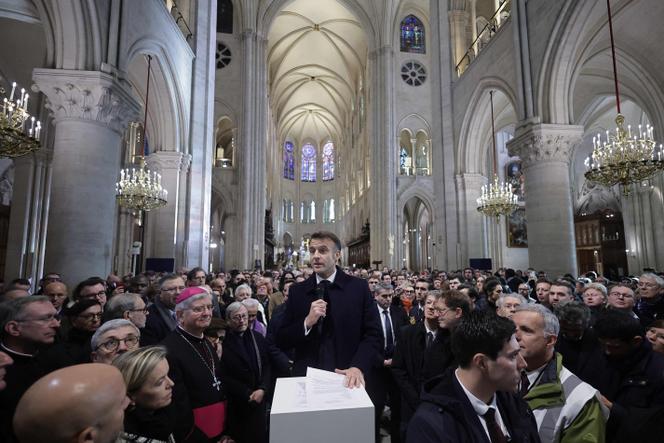
Notre-Dame: What’s the backstory?
Construction on the cathedral began in 1163. A bishop of Paris named Maurice de Sully wanted to reconstruct a site where there had once been a Roman church and pagan temple. It took over 100 years to complete. At the time, Paris was a burgeoning political, economic and intellectual center in Europe. De Sully wanted Notre-Dame to reflect that.
Why is Notre-Dame so well-known?
The cathedral itself − before the fire − was regarded as an architectural feat. It is filled with symbolic decorations, colorful glass, artworks and gargoyles. Its towers are more than 220 feet tall and the building is more than 400 feet long. It’s almost 52,000 square feet. It is home to a number of important relics including the Crown of Thorns, a wreath of thorns believed by the faithful to have been placed on the head of Jesus Christ at his crucifixion.
Notre-Dame was arguably immortalized by Victor Hugo’s 1831 novel “The Hunchback of Notre Dame.” That book centers on Quasimodo, the cathedral’s bell-ringer, and Esmeralda, a kind and beautiful street dancer. The novel has also been adapted into a number of films, including a much-watched animated Disney version in 1996. The cathedral’s gothic form has been depicted in paintings, etchings and photographs.
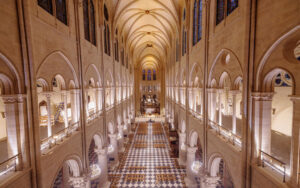
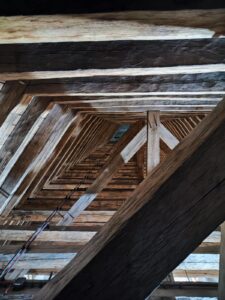
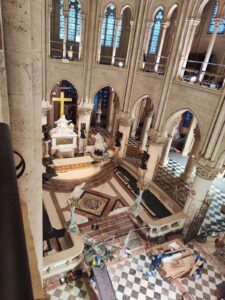
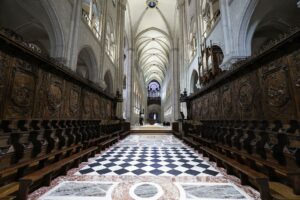
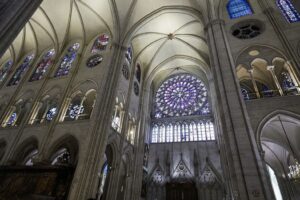
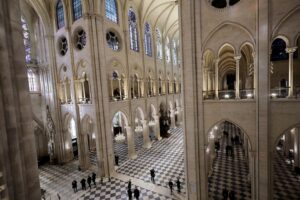
What caused the fire?
Investigators after a lengthy probe ruled out arson and determined the fire was probably caused by an accident, either an electrical fault or sparked by a smoldering cigarette left by a workman.
What happened during the fire?
Hundreds of firefighters battled for more than 15 hours to save the cathedral. The blaze collapsed the cathedral’s spire and spread to one of its rectangular towers. Firefighters prevented the flames from spreading to the church’s northern belfry. Many precious sculptures and relics were saved, though some sustained water damage.
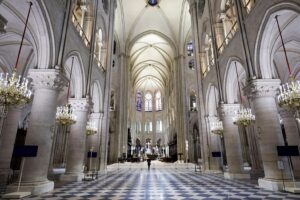
What do we know about the restoration project?
According to Rebuilding Notre-Dame de Paris, an estimated 2,000 stonemasons, carpenters, sculptors, gilders roofers, foundry-workers, art experts and various types of engineers worked on the project at an estimated cost of almost $800 million. Organ builders restored 8,000 pipes belonging to Notre-Dame’s great organ.
“We will rebuild Notre-Dame because that’s what the French people are expecting,” Macron told reporters at the site of the fire in 2019. “Because that’s what our history is worthy of. Because that’s our deep destiny.”
Video and photos appeared to show that the cathedral’s cream-colored limestone walls, long obscured by grime and dust even before the fire, had been restored, giving the interior a much lighter feel and atmosphere. In a speech on Friday, Macron said that when Notre-Dame fully opens it will be a “shock of hope.”
Contributing: Ryan W. Miller -USA Today
VIDEO

